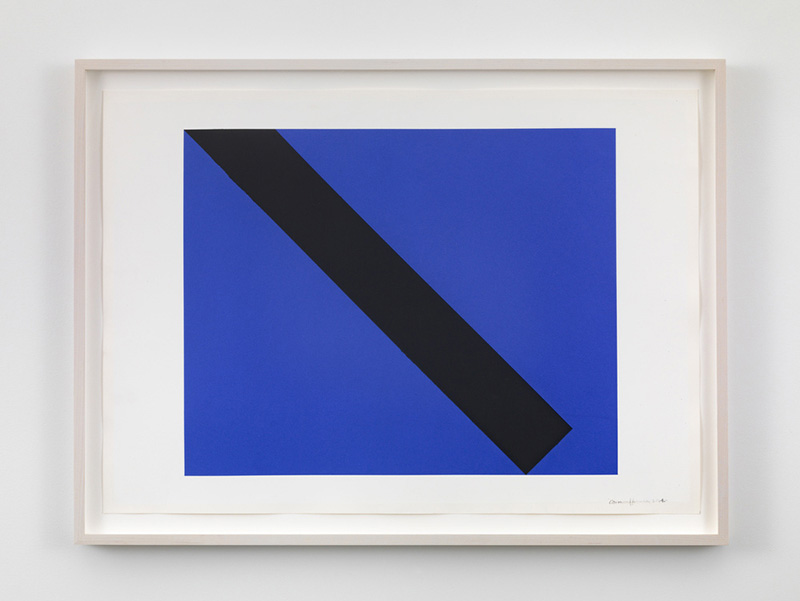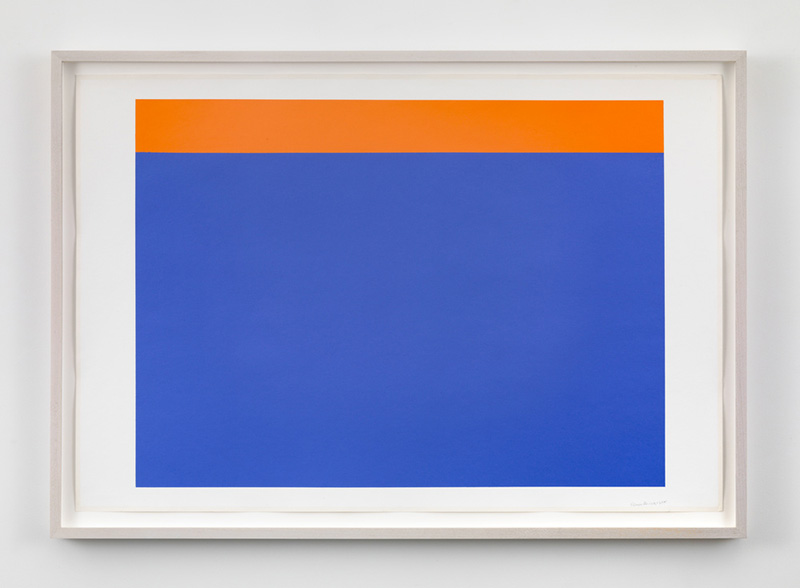ART-PRESENTATION: Carmen Herrera-Paintings on Paper
 Carmen Herrera was discovered at the age of 89 after painting for more than 60 years. Now she is recognized as a pioneer of geometric abstraction and Latin American Modernism, her radiant geometric paintings are striking in their formal control. The influence of her architectural studies at the University of Havana is clear. From the beginning, Carmen Herrera’s personal path to abstraction has been characterized by order and simplicity. These qualities are evident both in her definition of forms and her use of strong color.
Carmen Herrera was discovered at the age of 89 after painting for more than 60 years. Now she is recognized as a pioneer of geometric abstraction and Latin American Modernism, her radiant geometric paintings are striking in their formal control. The influence of her architectural studies at the University of Havana is clear. From the beginning, Carmen Herrera’s personal path to abstraction has been characterized by order and simplicity. These qualities are evident both in her definition of forms and her use of strong color.
By Efi Michalarou
Photo: Lisson Gallery Archive
Carmen Herrera at her solo exhibition “Paintings on Paper” at Lisson Gallery presents recent works on paper. Herrera produced a number of paintings on paper throughout the ‘60s, but subsequently focused on canvas until revisiting the medium in 2010. Carmen Herrera creates symmetry, asymmetry and an infinite variety of movement, rhythm and spatial tension across the canvas with the most unobtrusive application of paint. As she moved towards pure, geometric abstraction in the post-war years in Paris, she exhibited alongside Theo van Doesburg, Max Bill and Piet Mondrian and a younger generation of Latin American artists, such as members of the Venezuelan Los Disidentes, Brazilian Concretists and the Argentinian Grupo Madi. Her work also chimes with painters from the US school such as Barnett Newman, Leon Polk Smith and Ellsworth Kelly. Born on 30/5/1915, in Havana, Carmen Herrera was educated in Havana and Paris, studying art, art history, and architecture. In 1939 she married an American, Jesse Loewenthal, and moved to New York City, where she attended classes at the Art Students League. From 1948 to 1953, Herrera and Loewenthal lived in Paris, where she became associated with an international group of artists, the Salon des Réalités Nouvelles. Herrera exhibited her work with them regularly and developed a distilled, geometric style of abstraction, reducing her palette to three colors for each composition, then further to two. Herrera’s hard-edged canvases emerged at the same time that Ellsworth Kelly, whose time in France overlapped with Herrera’s, began producing his own abstractions and around the same time that Frank Stella began producing his famous black paintings. Herrera’s ascetic compositions, which prefigured the development of Minimalism by almost a decade, did not find a warm reception when she returned to New York in 1954, a time when Abstract Expressionism still reigned supreme. As both a woman and an immigrant, Herrera faced significant discrimination in the art world, yet she persisted, and continued to paint for the next six decades, only rarely exhibiting her work publicly. Today Herrera continues to work almost every day in her studio, and her oeuvre demonstrates a disciplined but highly sophisticated exploration of color and form. As she once stated, “I believe that I will always be in awe of the straight line, its beauty is what keeps me painting”.
Info: Lisson Gallery, 138 Tenth Avenue, New York, Duration: 3/5-10/6/17, Days & Hours: Tue-Sat 10:00-18:00, www.lissongallery.com


